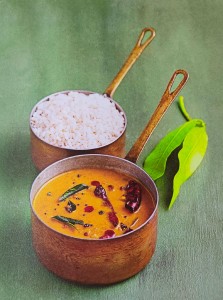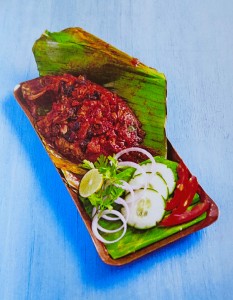Taste & flavours of Kerala cuisine
Whichever part of India we live in, most of us just wait for that part of the year when we can feast on traditional sadhya on the occasion of Onam. Sadhya (feast) is a traditional Kerala vegetarian meal served with boiled rice and a host of side dishes, and is always served on a banana leaf. The traditional food items include sambar, aviyal, kaalan, theeyal, thoran, inji pulli, puliserry, appam, rasam and chakka (jackfruit) payasam. Coconut, an integral part of any Kerala meal, is used liberally in any sadhya.
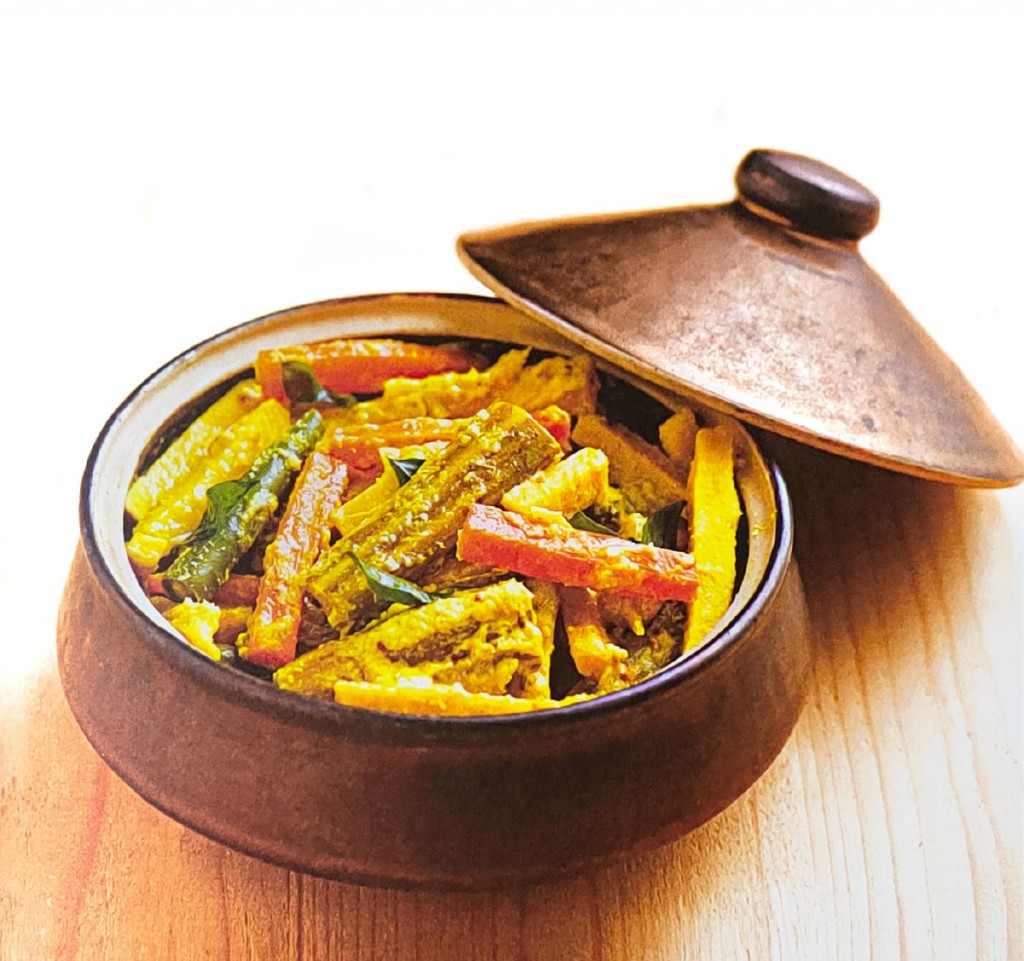
Most non-Keralites know this much, and little else, about Kerala food. Of course the non-vegetarians know about, and salivate, just thinking about the rich variety of fresh and delicious seafood items prepared in Kerala. A true blooded foodie who travels to Kerala and experiences a houseboat stay doesn’t… cannot… return without asking the boatman to navigate to one of the seafood markets, pick up the oh-so-fresh kari meen (pearl spot) and prawns, take in the heavenly aroma as the resident cook prepares a meal from the fresh catch. A host of vegetarian side dishes — even the karela poriyal (bitter gourd) tastes so good in Kerala. A pint of beer to wash down the freshly prepared heavenly meal, as the houseboat gently moves along the calm tranquil waters of the Vembanad lake, and you can’t ask for anything more.
To know more about the rich variety of different types of Kerala cuisine, we now have a great book titled Paachakam-Heritage cuisine of Kerala, written by Sabita Radhakrishnan.
A true blooded foodie who travels to Kerala and experiences a houseboat stay doesn’t… cannot… return without asking the boatman to navigate to one of the seafood markets, and pick up the oh-so-fresh kari meen (pearl spot) and prawns.
In this attractively designed and well brought out book, she gives us a brief description of the traditional and defining food from five dominant communities of Kerala, along with recipes. It includes delicacies and staples from the Syrian Christians, Nairs, Mappilas, Thiyas and the Namboothiris. There is a separate general section on food that is common to all the communities of Kerala.
Syrian Christian
We learn that the Syrian Christians boast of a rich and varied cuisine with kal appam, kuzhal appam and Errachi Olayathi, a special dish made with beef, being their staples. Roasted duck or wild boar, with strong masala, is served at Christmas. Sabita tells us that a typical Syrian Christian meal is a “feast, replete with fish, mutton, chicken or beef. While I cooked Kerala meals for a year to understand their spices and familiarise myself with an alien food culture, this food never failed to fascinate me,” she says.
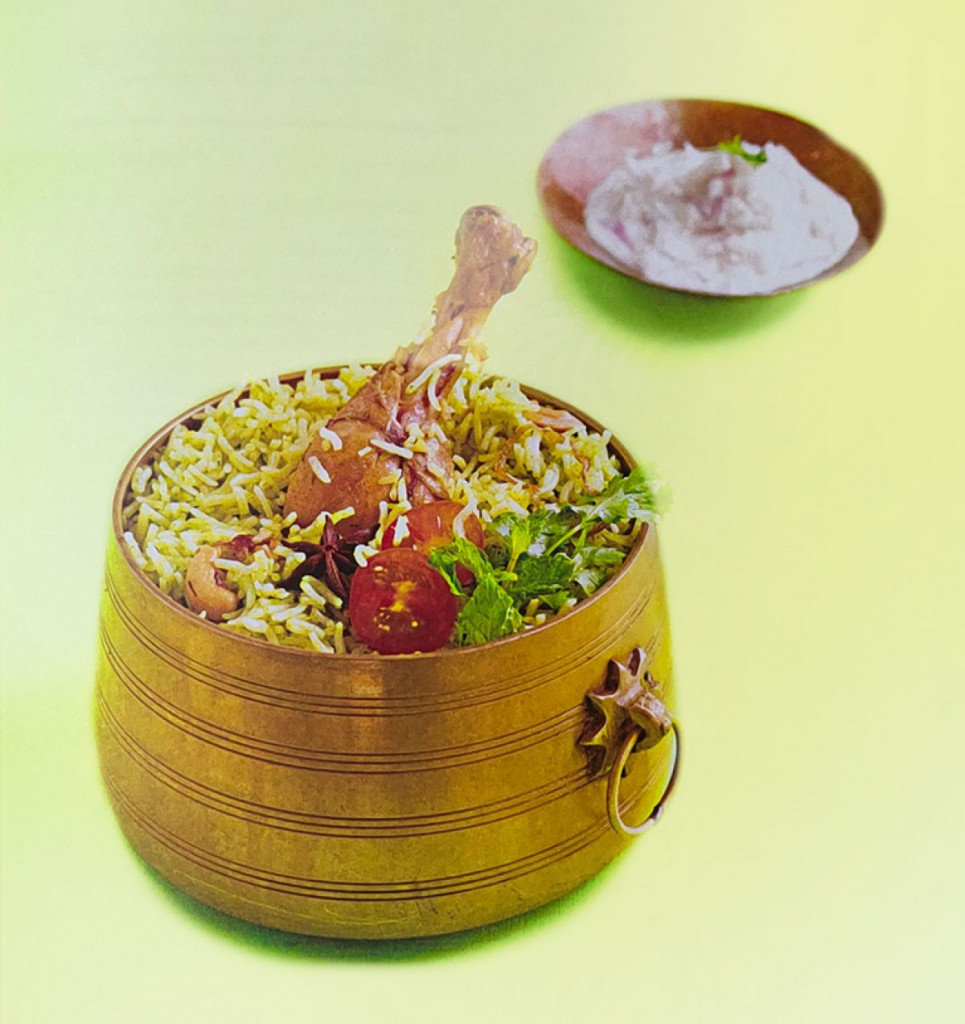
Mapillas/Moplahs
Coming to the Mapillas, also known as Moplahs, the Arab influence is seen in the biryanis and the alias, a Mapilla dish derived from harees, a traditional Arab dish made with wheat, meat and salt. Arab traders, who are believed to have arrived in Kerala in the seventh or eighth century might have introduced Islam in Kerala. They married Kerala women, and hence the Arab influence on the Mapilla food. Meen pathiri, a curried fish placed between two rice pathiris and steamed, is an unusual but popular variation in their food and serves as a meal-in-one.
Thiyas
The Thiya community originally comprised toddy tappers. That famous Kerala delicacy, appam and stew, popular throughout Kerala, is a breakfast delicacy. Non-vegetarian variants served with appam and very popular, are fish in a coconut sauce, cooked with mango or mutton cooked in coconut milk.
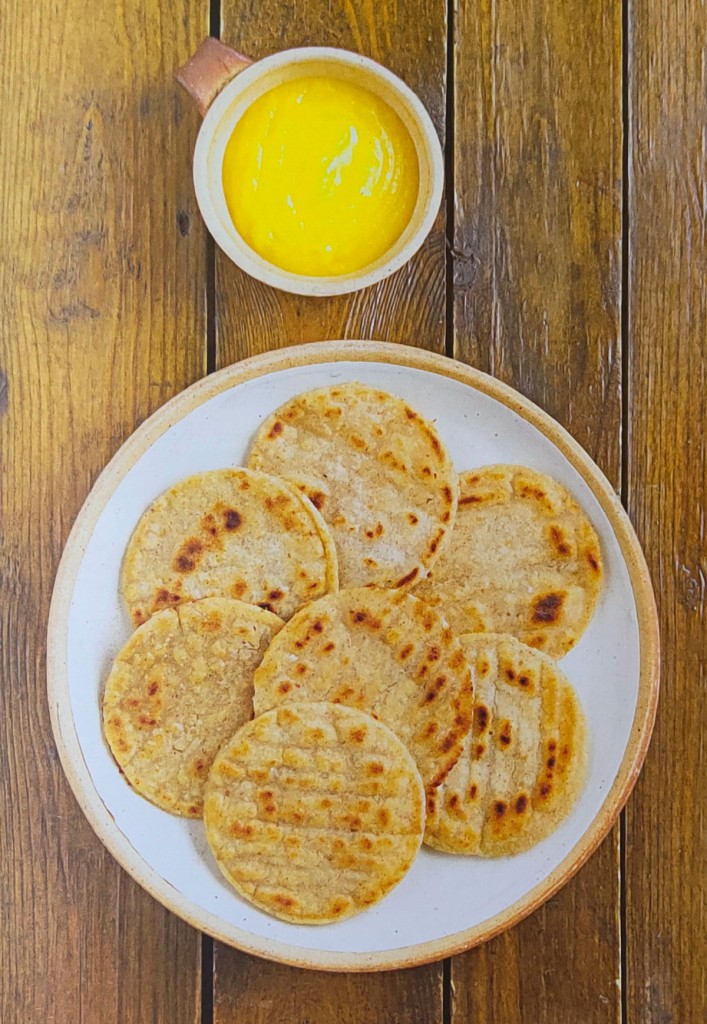
Nairs
The Nairs were the warrior community of Kerala and their non-vegetarian cooking is extremely popular. “They make the vella appam for breakfast or the puttu steamed in hollow bamboo teamed with sweet milk and bananas, drumsticks, beans and cashews cooked in coconut milk and mixed with sour curds and coconut oil.”
Namboothiris
The Namboothiris are the Kerala Brahmins and are strict vegetarians and eat idlis, dosais or puttu for breakfast and have rice with kootu, kalan and olan for the main meals. They avoid eating garlic. The avial and mango pachidi, a semi-cooked curd-based salad, is a speciality and most welcome as a cooling delicacy during hot summers.
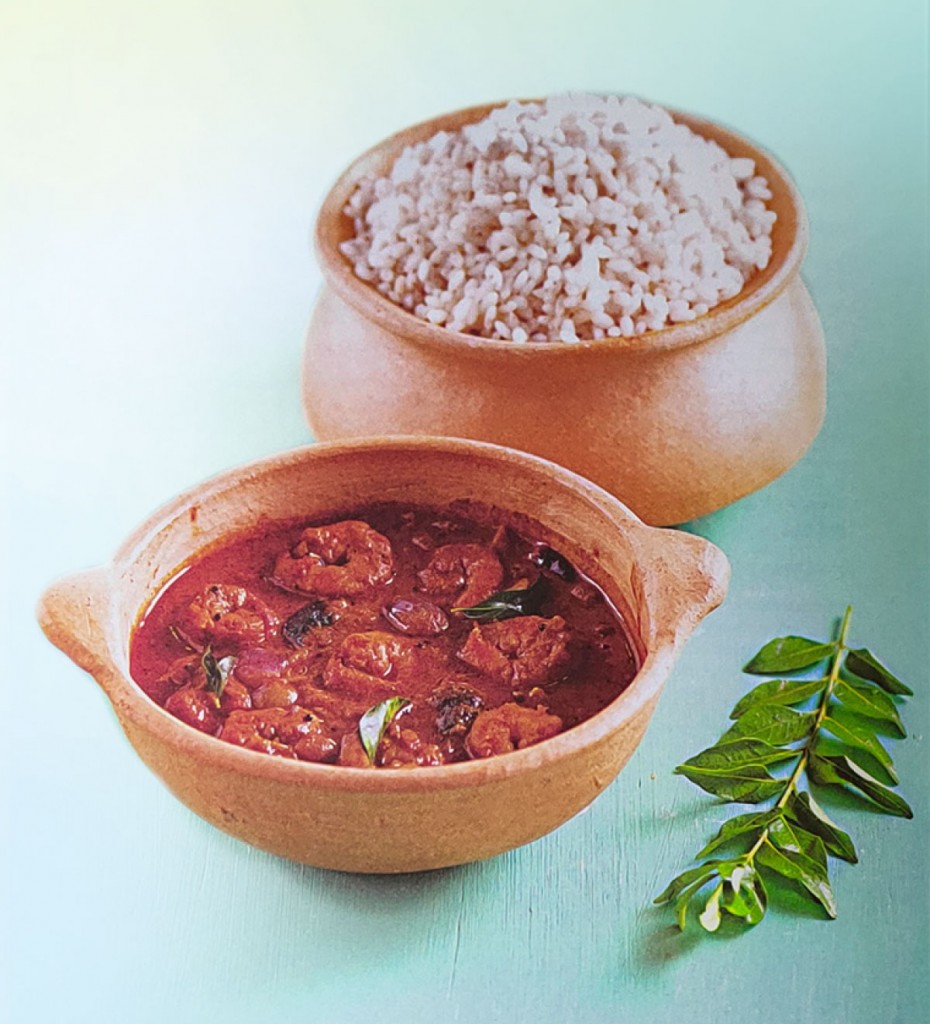
Classic favourites
The best part of Kerala cuisine, the author tells
us, is the thread of commonality that runs through most Kerala cuisines, as defined by the wide use of coconut, coconut oil and tamarind in their cooking. There is a separate chapter in this interesting book on “classic favourites”; common ingredient that appear in various Kerala cuisines include the tapioca, jackfruit, and of course, the all-pervasive and most popular kari meen.
In this section, you will also find recipes for what most non-Keralites struggle with — basic batter for appam and kalappam, as well as Pachai kozhi biryani (green chicken biryani).
Title
Paachakam — Heritage
cuisine of Kerala
Author
Sabita Radhakrishnan
Publisher
Roli Books
Pages
200
Price
₹1,495
Serves 4
Mampazha puliseri
Ripe mango in yoghurt coconut gravy
A curry made with ripe mangoes and curds. The sweetness and sour taste of the fruit melds with the tartness of curds imparting an unusual flavour, and the touch of Kashmiri chilli powder enhances the taste.
Ingredients
- 4 small ripe mangoes or 2 large mangoes (see note)
- 2 green chillies, slit lengthwise
- 1 tsp turmeric (haldi), powder
- 1 tsp Kashmiri chilli (Kashmiri lal mirch) powder
- 1 tsp salt, or to taste
- 1 cup (240 g) sour yoghurt (dahi)
- ½ cup (40 g) fresh coconut (nariyal), grated
- 1 tsp cumin seeds (jeera)
- 1 marble-size piece jaggery (gur)
Tempering
- 1 Tbsp (15 ml) coconut oil or any oil of your choice
- 1 tsp mustard seeds (rai)
- ½ tsp fenugreek seeds (methi dana)
- 1 dried red chilli (sookhi lal mirch)
- 1 sprig curry leaves (kadhi patta)
Method
- To make the mango curry: Mash the mango pieces slightly, only so the juice comes out. Place them along with the green chillies, turmeric, chilli powder and salt in a saucepan. Add enough water to cover the ingredients. Place the pan over medium heat and bring to a boil. Lower the heat to a simmer and cook until the mangoes are well cooked and soft.
- In a food processor or blender, combine the yoghurt, coconut and cumin seeds. Grind to a very fine paste.
- Add this paste to the mango curry. Stir to combine. Add more water to gain sauce-like consistency.
- Add the jaggery to balance the sweetness and sourness of the curry. Stir continuously and let the gravy simmer for 1 minute.
- To make the tempering: In a small pan over medium heat, heat the coconut oil. Add the mustard seeds and fenugreek seeds. Cook until the seeds begin to crackle.
- Add the dried red chilli and curry leaves. Pour the tempering over the mango curry.
Note: If using small mangoes, peel and cook whole. If using large mangoes, cut them into pieces. The taste of this curry will depend on the flavour of the mangoes. In Kerala, a small variety of delicious nattu mango (native mangoes) are used for this curry.
Serves 4
Meen pollichathu
Fish wrapped in banana leaf
One of the signature classic dishes of Kerala cuisine, the fish is cooked in coconut oil and then steamed, wrapped in banana leaf.
Ingredients
- 9 oz (250 g) pearl spot (karimeen), pomfret, or slices of seer fish
- 1 tsp fresh lime juice
- 1 tsp salt, or to taste
- 1 tsp red chilli (lal mirch) powder
- ½ tsp turmeric (haldi) powder
- 1 tsp freshly-ground black pepper (kali mirch)
- 1 heapful tsp coriander (dhaniya) powder
- 3 to 4 tbsp (45 to 60 ml) coconut oil, or any oil of your choice
- 10 shallots (ulli), very thinly sliced
- 3 green chillies, slit lengthwise
- 1 tsp fresh ginger (adrak), peeled and finely minced
- 1 tsp finely minced garlic (lahsun)
- 1 sprig curry leaves (kadhi patta)
- Salt to taste
- 1 small tomato, finely chopped
- ½ cup (120 ml) thick coconut milk
- ½ tsp fresh lime juice
- 1 banana leaf, washed and dried
Method
- If using karimeen or whole pomfret make three ½-inch gashes ¼-inch deep on both sides. In a small bowl, combine the lime juice, salt, chilli powder and turmeric. Rub the fish with the marinade and refrigerate to marinate for 1 hour.
- To make the spice paste: In a small bowl, stir together the chilli powder, turmeric, pepper, and coriander. Add a little water and stir into a paste.
- In a large skillet over medium heat, heat the oil. Add the fish and fry until done or 5 minutes per side. Remove from the skillet and set aside.
- In the oil remaining in the skillet, sauté the shallots, green chillies, ginger, garlic, and curry leaves until the shallots turn transparent
- Add the spice paste and salt to taste. Stir to combine.
- Stir in the tomato and sauté until mushy.
- Stir in the coconut milk. Simmer until thickened and reduced. This should take about 5 minutes.
- Add the lime juice and mix well.
- Spread half the masala paste on the banana leaf. Place the fish on it. Spoon the remaining masala paste over the fish. Fold the banana leaf to make a parcel. Tie it securely with kitchen string. Alternatively, wrap the banana leaf parcel in aluminium foil so it does not open.
- Heat a tawa or griddle over medium heat. Place the fish parcel on it and cook for 10 minutes on each side. Alternatively, you can microwave it (not in the foil) at medium-low heat for 3 minutes on each side. Remove from the tawa, open the parcel, and serve hot.

